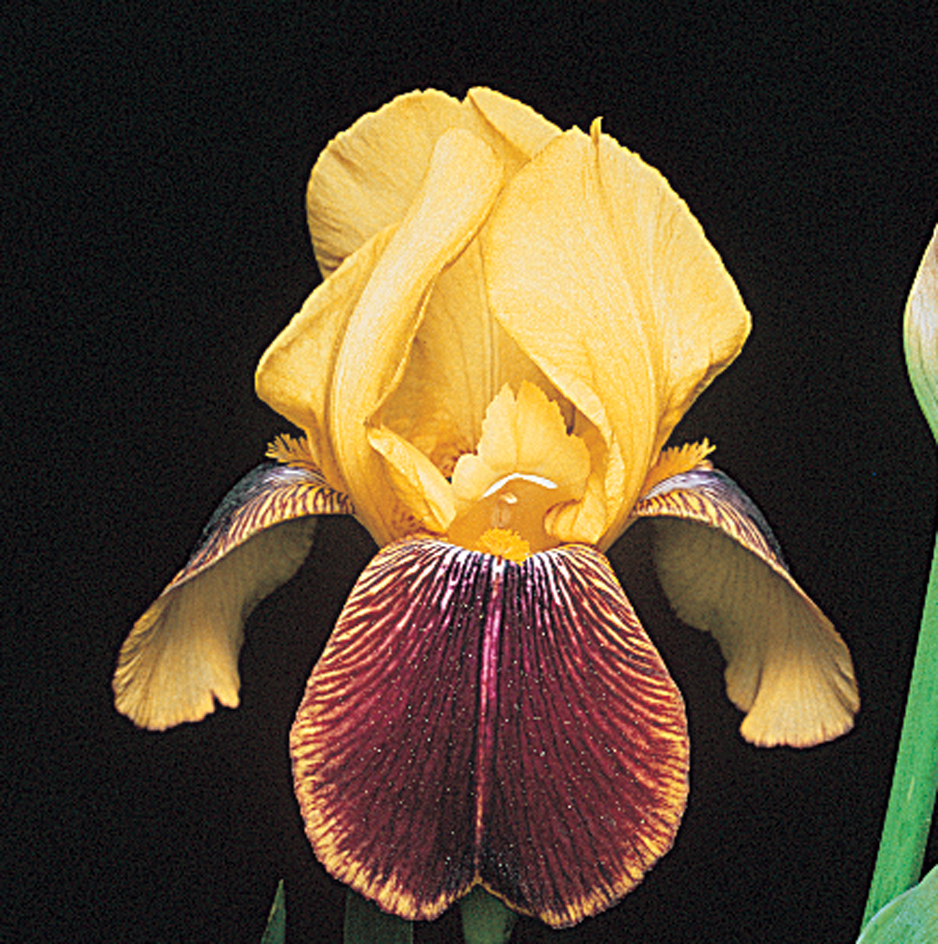Iris << Y rihs >> is a popular plant with large, beautifully colored flowers. The name iris comes from the Greek word for rainbow. The unusual shape of the iris flower makes it easy to recognize. An iris has three sets of three petallike parts. The lower set, called the falls, flares out and hangs down. The upper parts, known as standards, curve up into a dome. Three curved stylebranches cover the stamens (male reproductive parts) in the center.

The colors of irises range through all shades and appear in many combinations. The plant may grow from 6 inches (15 centimeters) to more than 6 feet (2 meters) tall. The flowers vary from 1 inch (2.5 centimeters) to more than 1 foot (30 centimeters) across. The leaves rise directly from rhizomes (underground stems). The leaves are usually sword-shaped and unifacial (similar in appearance on both sides). Some iris rhizomes are bulblike, but most are elongated. Iris rhizomes contain a poison, and eating them can cause severe stomach upset.
Irises grow throughout northern temperate (seasonal) regions. These perennial plants bloom from April through July. They may be planted in spring before blooming, or in autumn. The plants with rhizomes give the best flowers if replanted about every four years. The most common garden irises are the tall bearded varieties. There are thousands of different kinds. The iris needs sun and average soil. The bearded iris also needs well-drained soil, but beardless iris does well in moist soil.
The larvae (young) of the iris borer insect eat their way through the leaves and roots, and often cause soft rot. This causes the leaves to turn yellow and the root to rot. Soft rot often follows winter injury to the plant. When either trouble occurs, the plant should be dug up and the roots cleaned before replanting in fresh soil.
The dried rhizome of certain bearded irises is called orrisroot. It is used in perfumes, powders, and medicines. Iris growing has become an important specialty. The American Iris Society has promoted this work in the United States. The iris is the state flower of Tennessee.
Fleur-de-lis is a name sometimes used for the iris. It is French for flower of the lily. Fleur-de-lis is also the name of a design that represents the white iris. It appeared as an emblem on the scepter of Egyptian rulers in 1500 B.C., and was carved on the brow of the Sphinx. It also became the emblem of the kings of France in the 1100’s. The design is also a symbol for North on the compass.
